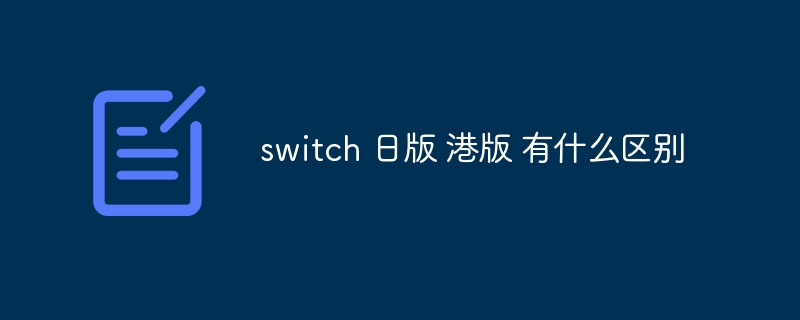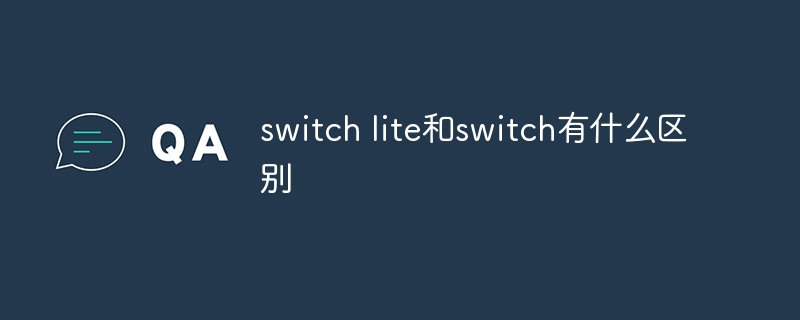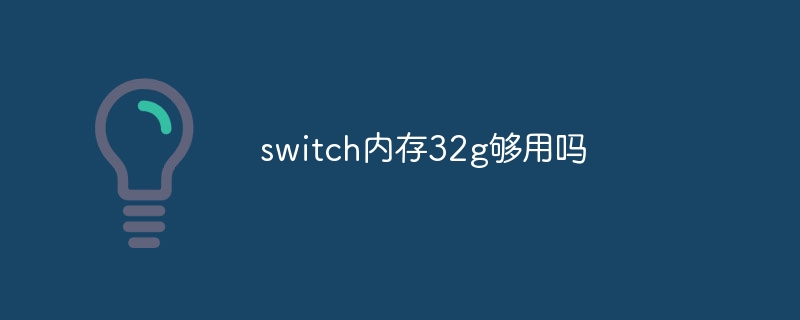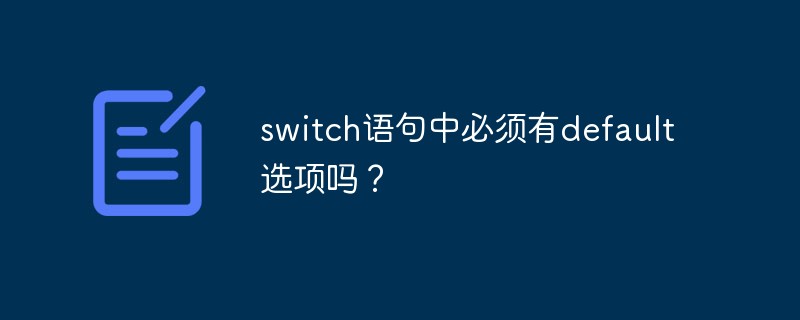 Backend Development
Backend Development PHP Tutorial
PHP Tutorial Master the advanced skills of PHP Switch statement: avoid using Break method
Master the advanced skills of PHP Switch statement: avoid using Break method
Advanced skills to master the PHP Switch statement: avoid using Break
The Switch statement in PHP is a commonly used flow control statement , usually used to execute different blocks of code based on different conditions. In the Switch statement, in most cases we will use break to terminate the current case and jump out of the switch statement, but sometimes we also need to bypass the break statement and continue to execute the next case or the default situation. This article will introduce some advanced techniques to help you better use Switch statements and avoid using break.
Situation without using Break
In some specific scenarios, we may need to bypass the break statement and let the program continue to execute the next case or default situation. The following is a simple example:
$fruit = "apple";
switch ($fruit) {
case "apple":
echo "Apple is red.";
case "banana":
echo "Banana is yellow.";
case "orange":
echo "Orange is orange.";
default:
echo "No fruit selected.";
}In the above code, if the value of $fruit is "apple", then the program will output the following content:
Apple is red. Banana is yellow. Orange is orange. No fruit selected.
Visible, because it is not used break statement, after the program matches the case "apple", it will continue to execute all subsequent cases until the switch ends. In this case, you need to pay special attention to the order of the cases and whether you need to continue to execute the code of subsequent cases.
Use Return instead of Break
A common alternative is to use the return statement instead of break, using return to terminate the execution of the program early and return the result. The following is an example:
function getFruitColor($fruit) {
switch ($fruit) {
case "apple":
return "red";
case "banana":
return "yellow";
case "orange":
return "orange";
default:
return "unknown";
}
}
echo "The color of the fruit is " . getFruitColor("apple");In the above example, based on the passed in fruit name, the function getFruitColor will return the corresponding color. Using the return statement can terminate the execution of the switch statement in advance and return the result to the caller, avoiding the use of break to directly terminate the execution of the entire function.
Use the Continue statement
In addition to using the return statement, you can also use the continue statement to skip the current case and continue executing the next case. The following is an example:
$fruit = "banana";
switch ($fruit) {
case "apple":
echo "Apple is red.";
continue;
case "banana":
echo "Banana is yellow.";
continue;
case "orange":
echo "Orange is orange.";
continue;
default:
echo "No fruit selected.";
}In the above code, if the value of $fruit is "banana", then the program will output:
Banana is yellow.
Due to the use of the continue statement, the program will jump After the execution of the current case, continue to the next case or the default situation.
Summary
When using the Switch statement, avoiding the use of break can provide a more flexible method of controlling the flow. By using return and continue statements appropriately, we can achieve finer logic control without terminating the entire switch statement. However, in actual programming, you should still choose the appropriate method according to the specific situation to ensure that the code is clear and readable.
In future programming, try to use these advanced techniques and continuously improve your application of Switch statements.
The above is the detailed content of Master the advanced skills of PHP Switch statement: avoid using Break method. For more information, please follow other related articles on the PHP Chinese website!
 switch日版港版有什么区别Jun 20, 2023 pm 02:06 PM
switch日版港版有什么区别Jun 20, 2023 pm 02:06 PMswitch日版港版的区别:1、充电器上存在主要区别,日版和国标充电口通用,港版使用英式三角插头;2、日版使用点卡支付,而港服使用支付宝支付;3、港版售后保修需要邮寄回HK售后点,而日版需要邮寄到Japan指定售后点。
 switch连电视没反应怎么办Jul 03, 2023 am 11:15 AM
switch连电视没反应怎么办Jul 03, 2023 am 11:15 AMswitch连电视没反应解决方法:1、检查switch和电视的电源是否连接;2、检查电视HDMI线接口是否插紧;3、Switch底座后盖打开,检查电源线和HDMI线是否插紧;4、检查Switch是否开机状态下放入底座;5、检查电视是否切换了信号源。
 艾尔登法环switch能玩么Mar 11, 2024 am 11:31 AM
艾尔登法环switch能玩么Mar 11, 2024 am 11:31 AM艾尔登法环能在switch上游玩吗?艾尔登法环作为一款极具魅力的动作RPG游戏,不少朋友可能还不明白它能否在switch平台上进行畅快游玩,答案是暂时无法实现。艾尔登法环switch能玩么答:不能在switch游玩。此款备受瞩目的魂系列角色扮演类动作游戏已正式发布,玩家可前往PC、ps4/5以及XboxSerieseX|S/XboxOne购买并立即体验。许多拥有switch的朋友们可能仍热切期待在ns上畅享这款游戏,但遗憾的说,该游戏并无switch版本。据官网配置要求显示,游戏配置较高,而sw
 switch lite和switch有什么区别Jun 28, 2023 pm 02:13 PM
switch lite和switch有什么区别Jun 28, 2023 pm 02:13 PMswitch lite和switch区别有:1、尺寸不同;2、屏幕大小及机身重量不同;3、手柄是否可拆卸及手柄功能不同;4、电池续航能力不同;5、手柄按键设计不同;6、可支持游戏不同;6、颜色不同。
 switch32g内存够用吗Jun 20, 2023 pm 02:28 PM
switch32g内存够用吗Jun 20, 2023 pm 02:28 PMswitch32g内存不够用,其原因如下:1、买数字版游戏想购买DLC截图储存到掌机里的话根本不够用;2、下载数字版游戏,32G内存大约可以储存2~3个游戏,根本满足不了玩游戏的需求;3、数字游戏及其dlc一般保持在5G,除过自带系统占用的空间,下载游戏对于玩家来说比较困难。
 switch语句中必须有default选项吗?Nov 25, 2020 pm 04:03 PM
switch语句中必须有default选项吗?Nov 25, 2020 pm 04:03 PMswitch语句中不是必须有default选项的。switch语句首先会找满足条件的case值做为执行后面的程序入口,若所有的case都不满足,则找default入口,若未找到则退出整个语句;default只是一个备用入口,有没有都无所谓。
 消息称世嘉拥有任天堂 Switch 2 开发套件,《FF7:R》在 Switch 2 上运行效果看上去像 PS5 游戏Sep 10, 2023 pm 05:33 PM
消息称世嘉拥有任天堂 Switch 2 开发套件,《FF7:R》在 Switch 2 上运行效果看上去像 PS5 游戏Sep 10, 2023 pm 05:33 PM本站9月2日消息,Reddit论坛用户TheRealImAHeroToo爆料称,世嘉拥有Switch2开发套件已经有一段时间了,新主机将具备新的相机功能,可向下兼容一些经过测试的游戏。SquareEnix拥有新款PS5开发套件,而《最终幻想7:重制版》在Switch2上运行的效果看上去像PS5游戏。目前该爆料者的账号已经删除,并表示不会再泄露信息,因为风险太大。本站注意到,该爆料者还提到:明年将推出另一款世嘉的索尼克游戏《女神异闻录6》或许不会在明年发布,主题是“黑与白”;还有一款尚未公布的《女


Hot AI Tools

Undresser.AI Undress
AI-powered app for creating realistic nude photos

AI Clothes Remover
Online AI tool for removing clothes from photos.

Undress AI Tool
Undress images for free

Clothoff.io
AI clothes remover

AI Hentai Generator
Generate AI Hentai for free.

Hot Article

Hot Tools

Safe Exam Browser
Safe Exam Browser is a secure browser environment for taking online exams securely. This software turns any computer into a secure workstation. It controls access to any utility and prevents students from using unauthorized resources.

Notepad++7.3.1
Easy-to-use and free code editor

MantisBT
Mantis is an easy-to-deploy web-based defect tracking tool designed to aid in product defect tracking. It requires PHP, MySQL and a web server. Check out our demo and hosting services.

Dreamweaver CS6
Visual web development tools

ZendStudio 13.5.1 Mac
Powerful PHP integrated development environment







